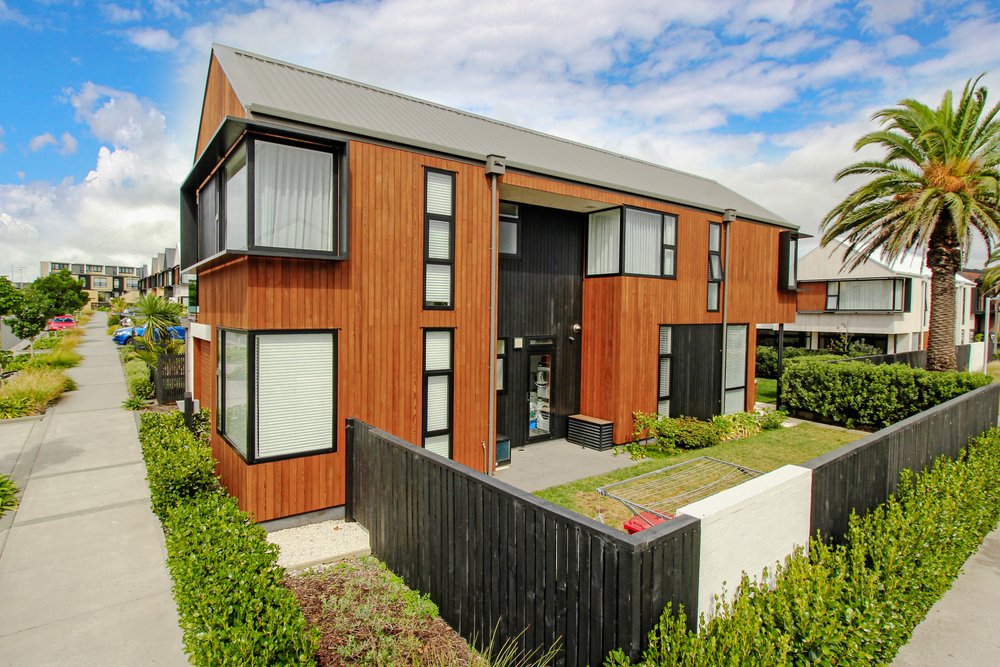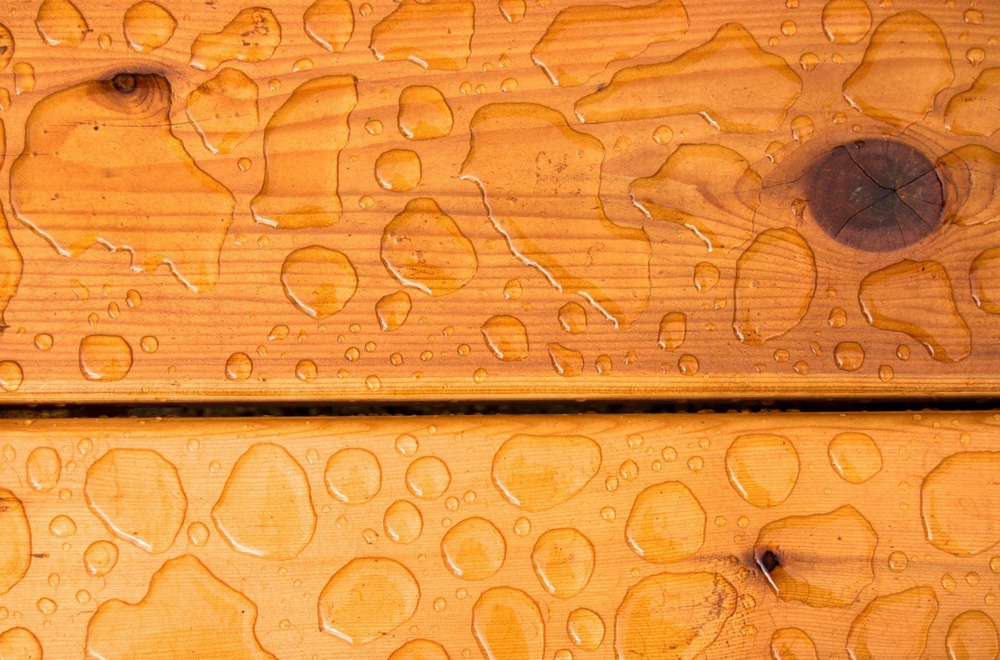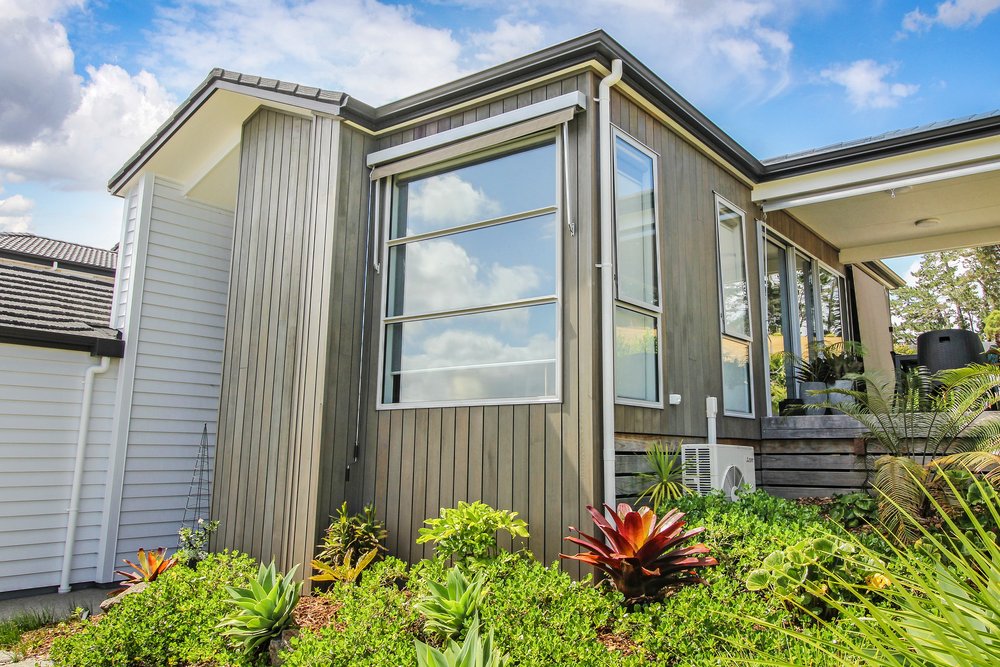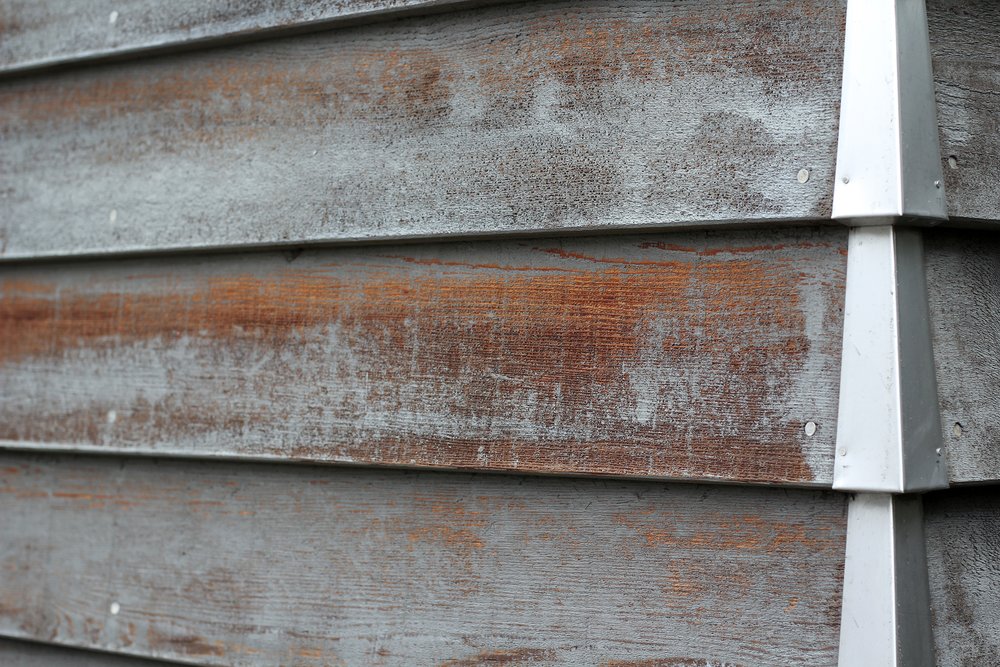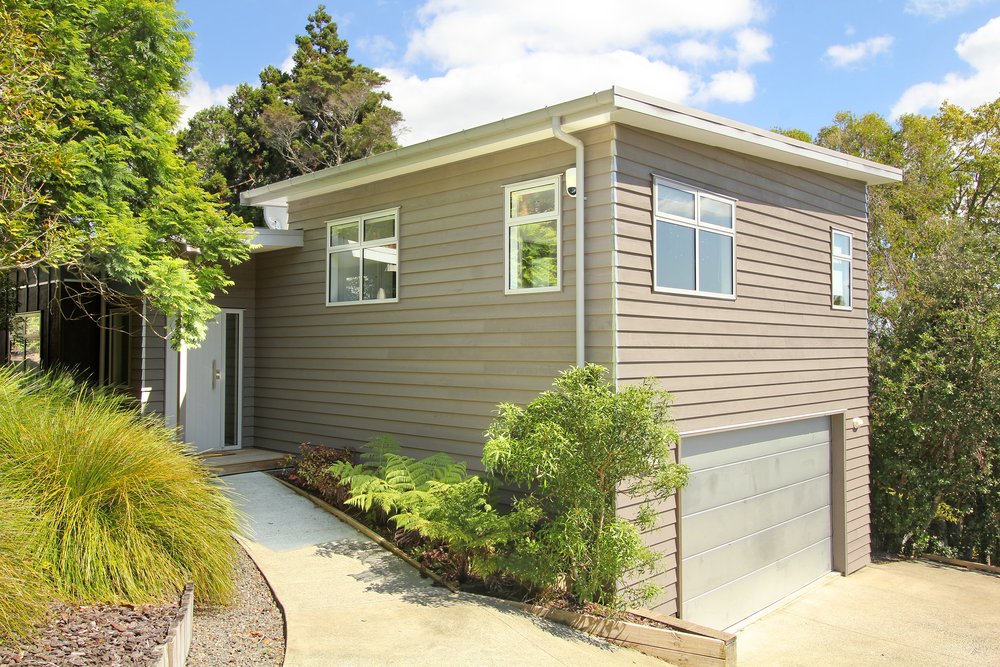As Cedar ages, we highly recommend transitioning Cedar from stain to a penetrating oil where possible.
If you want to know more about the pros and cons of each, please read our article The Cedar Oil vs. Cedar Stain Debate.
The simple truth is, no matter how much stain you put on the surface of the timber, 5-10 years of sun exposure on a northern face will deplete the natural oils of the Cedar and cause the boards to dry out, cup, then ultimately split.
This doesn’t just look bad, it threatens the integrity of your home to withstand the elements and if the damage continues, you may need to replace the cladding altogether.
How Stained Cedar Ends Up Looking Unsightly
Treating aged Cedar with stain isn’t usually an informed choice by the homeowner. Often, the previous owner has done a quick fix and used stain to make the Cedar look pretty before selling, or the current homeowner has stained over a poorly prepared stain without stripping back the boards.
Stains are translucent, so even though they have some opacity, you can still see through them and unless the preparation is done well, stains don’t hide imperfections.
Eventually the stain will delaminate in the harsh UV, giving a camouflaged look with light and dark shades that are often patchy and uneven.
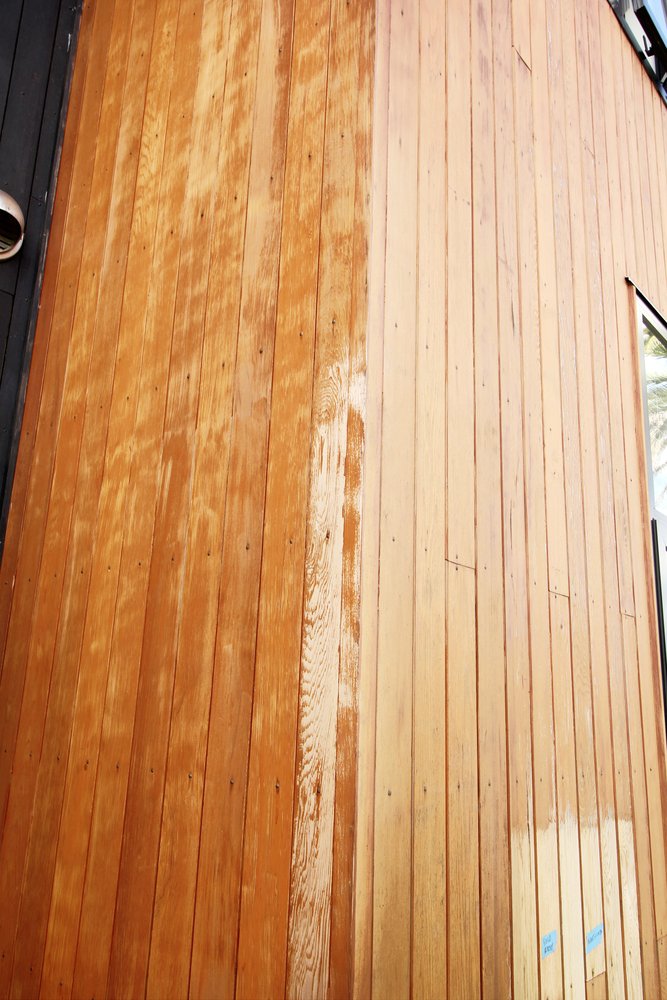
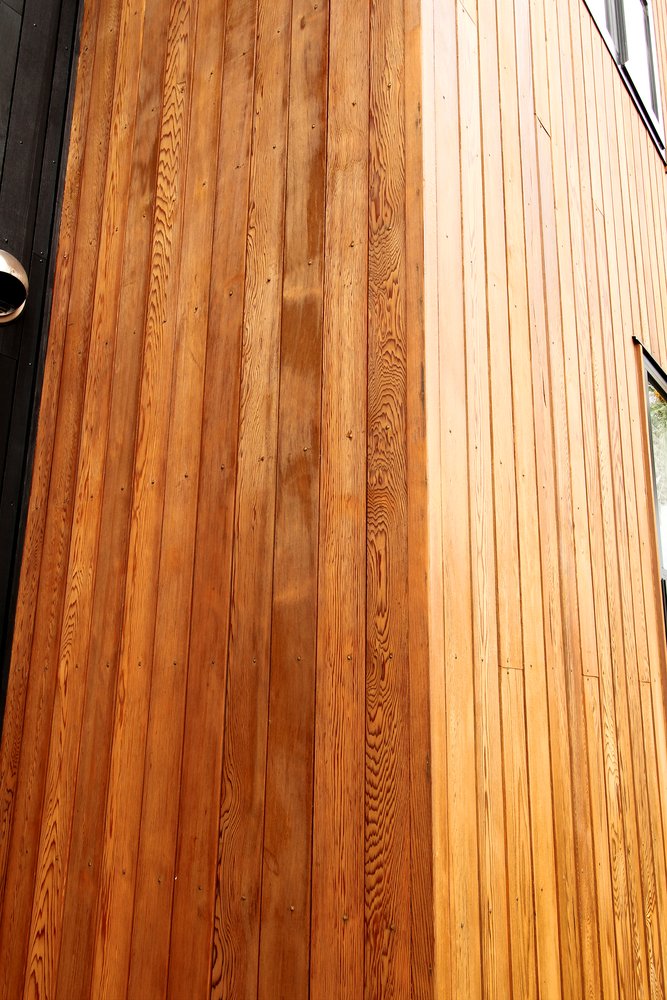
The Transition Process from Stain to Oil
First, we will do a site visit to look at the current state of the Cedar boards.
In the best-case scenario, the weatherboards will have had an even exposure to the sun. We then use a strong solution of the oxy cleaner to get in behind any of the oxidised stain which has been broken down by the sun, then use a heavy wash to remove anything which is loose.
The heavy wash will give us a good look at the condition of the boards below. If there is any stain remaining on the surface, we will need to sand or strip the boards back to their virgin state before applying the oil.
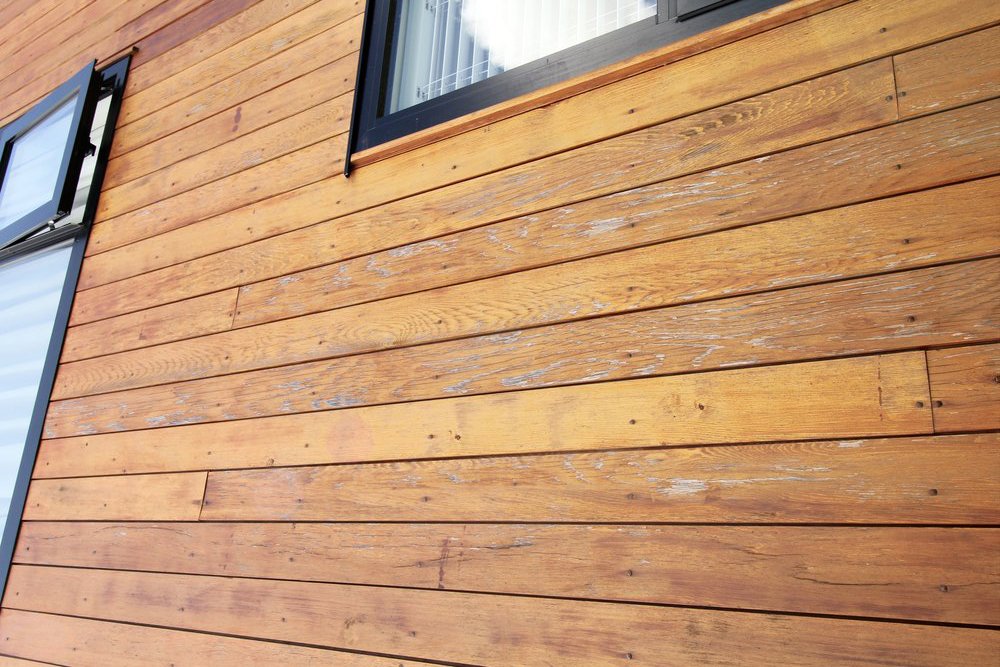
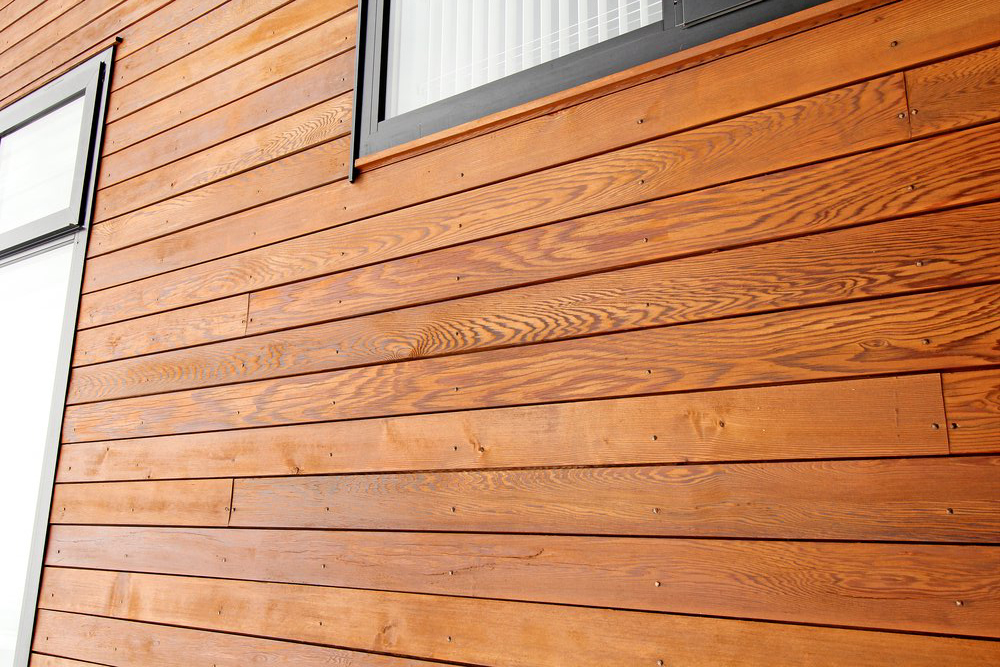
If the boards have had partial shade cover, such as nearby trees or soffits that have only protected the upper areas, they need to be stripped. You can’t just oil over the top and hope that it’s going to match the weatherboards below.
This adds a lot of cost to the process and if the homeowner isn’t willing to spend that much money, we may recommend applying another coat of stain to provide at least some protection and keep the house looking tidy.
Be Prepared for the Shiny-flat Look
One of the biggest downsides of moving from stain to oil is a 3-9 month transition period where your Cedar will have a shiny-flat-shiny-flat look.
This happens when oil is applied to any surface that still has stain remnants. The oil cannot soak through the stain as it is non-porous, so it sits on top, around the surface area where the oil has soaked in, giving the shiny-flat-shiny-flat look.
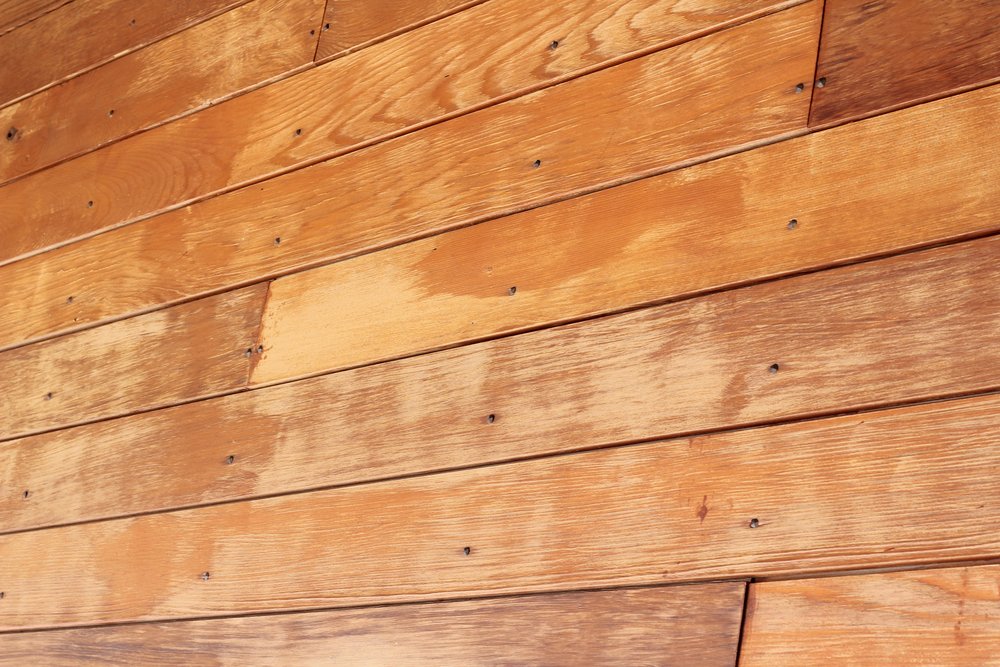

In the sunlight, the shiny-flat-shiny-flat look is not pretty. However, this effect is only temporary and after 3-9 months the oil eventually soaks in behind the stain and the stain will delaminate further.
After 3-9 months, we will come back and give the boards another heavy wash, sand back any remaining stain and apply another coat of oil. 9-12 months later we repeat the same process. After 12-24 months the process will be complete and the Cedar will move into a regular maintenance schedule, with sun exposed areas being treated every 2-3 summers.
What Costs Are Involved?
Cost is the final hurdle for many Cedar homeowners. Stripping off stain is an expensive process and if your current home is not your forever home, the costs might be prohibitive.
However, if you are planning to stay in your current home for the foreseeable future, the costs become an investment that will pay for itself. Over time, oil is much easier to apply than stain, provides superior protection against the elements and increases the lifespan of your Cedar.
In broad terms, it comes down to this: do you want to spend the extra 10k to remove the stain and give yourself an easy to maintain finish, or deduct the 10k from the cost of replacing the cladding in the not-to-distant future?
By investing in the health of your Cedar now, you will save money on long-term maintenance, and your cladding will look amazing.
Get An Expert Opinion!
As you can see, there are a lot of variables when considering the transition from stain to oil. This article is intended to educate Cedar homeowners on the general process, but nothing compares to having one of our team visit your house and make a professional assessment.
For a free Cedar Assessment, get in touch by calling 0800 298 298. There is no obligation and our goal is always to look after the best interests of our customers over the lifecycle of their homes.




